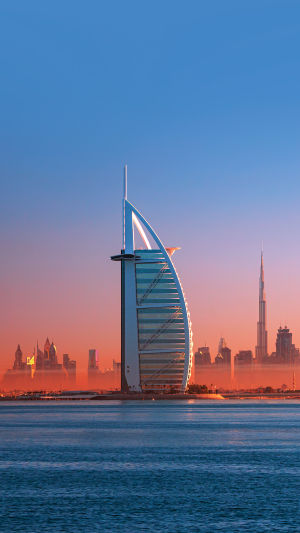In the world of luxury and architectural marvels, few structures are as iconic as the Burj Al Arab in Dubai.
Standing proudly on its own artificial island, this stunning sail-shaped hotel is a symbol of modern Dubai's transformation from a desert outpost to a global metropolis.
But how did this monumental landmark come to be, and what makes it so significant?
<h3>The Vision Behind Burj Al Arab</h3>
The story of Burj Al Arab began in the early 1990s when Dubai's rulers decided it was time to redefine the city's image. Sheikh Mohammed bin Rashid Al Maktoum, then Crown Prince of Dubai, envisioned a structure that would put Dubai on the map—a building that would instantly become synonymous with luxury and innovation.
With this ambition, the idea for Burj Al Arab was born: a hotel that not only provided a seven-star experience but also served as a beacon of architectural brilliance.
<h3>From Blueprint to Reality</h3>
Construction of Burj Al Arab started in 1994 and took five years to complete. The ambitious project was led by Tom Wright of WS Atkins, a British architectural firm known for its expertise in innovative designs.
Wright's inspiration came from the shape of a dhow sail, a nod to Dubai's maritime heritage. He aimed to create a building that would reflect both the city's past and its futuristic aspirations.
Building the hotel on a man-made island was a groundbreaking feat in itself. The island was constructed 280 meters off the coast of Jumeirah Beach using a unique combination of concrete and steel piles, each driven deep into the sand to ensure stability.
Over 3,000 contractors, engineers, and skilled laborers worked tirelessly to bring this vision to life. Every aspect of the structure was designed to impress, from the massive atrium that rises 180 meters to the sky to the striking exoskeleton that forms the iconic sail shape.
Inside Burj Al Arab | Guided tour of Dubai's most iconic hotel
Video by Rayna Tours
<h3>Redefining Luxury Hospitality</h3>
When Burj Al Arab opened its doors in 1999, it set a new benchmark for opulence. Often referred to as the world's first seven-star hotel, Burj Al Arab didn't just raise the bar—it redefined it. With its private butler service, 24-karat gold accents, and helicopter landing pad, it quickly became a favorite among the world's elite.
The interiors of the hotel are equally as breathtaking as the exterior. Designed by Khuan Chew, the décor blends bold colors, gold leaf details, and exquisite mosaics to create a sense of unparalleled luxury. The hotel features 202 duplex suites, each equipped with floor-to-ceiling windows offering panoramic views of the Arabian Gulf.
<h3>Symbol of Dubai's Ambition</h3>
Beyond being a luxurious destination, Burj Al Arab holds immense symbolic value for Dubai. It represents the city's drive to push boundaries, think outside the box, and create landmarks that leave a lasting impression. The hotel's opening coincided with a period of rapid development in Dubai, signaling the city's arrival on the world stage.
The success of Burj Al Arab inspired Dubai to continue building iconic structures, such as the Palm Jumeirah and the Burj Khalifa, solidifying its reputation as a hub of architectural innovation and extravagance. Today, Burj Al Arab is more than just a hotel—it's an emblem of Dubai's rise as a global city.
<h3>An Icon for the Future</h3>
Even two decades after its completion, Burj Al Arab continues to be a symbol of Dubai's ambitions. It attracts millions of visitors each year, many of whom come just to take a photograph with the iconic sail structure in the background. The hotel remains a must-see destination, representing both the old and new Dubai—a bridge between tradition and modernity.
In essence, Burj Al Arab is not just a hotel; it's a masterpiece that embodies the spirit of Dubai: daring, innovative, and always looking toward the future.





